 W
WIn spirituality, nondualism, also called non-duality, means "not two" or "one undivided without a second". Nondualism primarily refers to a mature state of consciousness, in which the dichotomy of I-other is "transcended", and awareness is described as "centerless" and "without dichotomies". Although this state of consciousness may seem to appear spontaneous, it usually follows prolonged preparation through ascetic or meditative/contemplative practice, which may include ethical injunctions. While the term "nondualism" is derived from Advaita Vedanta, descriptions of nondual consciousness can be found within Hinduism, Buddhism, Sufism and western Christian and neo-Platonic traditions.
 W
WSwami Abhedananda, born Kaliprasad Chandra was a direct disciple of the 19th century mystic Ramakrishna Paramahansa and the founder of Ramakrishna Vedanta Math. Swami Vivekananda sent him to the West to head the Vedanta Society of New York in 1897, and spread the message of Vedanta, a theme on which he authored several books through his life, and subsequently founded the Ramakrishna Vedanta Math, in Calcutta and Darjeeling.
 W
WRobert Adams was an American Advaita teacher. In later life Adams held satsang with a small group of devotees in California, US. He mainly advocated the path of jñāna yoga with an emphasis on the practice of self-enquiry. Adams' teachings were not well known in his lifetime, but have since been widely circulated amongst those investigating the philosophy of Advaita and the Western devotees of Bhagavan Sri Ramana Maharshi. A book of his teachings, Silence of the Heart: Dialogues with Robert Adams, was published in 1999.
 W
WAdbhutananda, born Rakhturam, was a direct monastic disciple of Ramakrishna, a mystic of nineteenth century Bengal. He is familiarly known as Latu Maharaj among the followers of Ramakrishna. Adbhutananda was the first monastic disciple to come to Ramakrishna. While most of Ramakrishna's direct disciples came from the Bengali intelligentsia, Adbhutananda's lack of formal education made him unique amongst them. He was a servant boy of a devotee of Ramakrishna, and he later became his monastic disciple. Though unlettered, Adbhutananda was considered as a monk with great spiritual insight by Ramakrishna's followers, and Vivekananda regarded him as "the greatest miracle of Ramakrishna".
 W
WAdvaita Vedānta is a school of Hindu philosophy, and is a classic system of spiritual realization in Indian tradition. The term Advaita refers to the idea that Brahman alone is ultimately real, the phenomenal transient world is an illusory appearance (maya) of Brahman, and the true self, atman, is not different from Brahman.
 W
WAjātivāda (अजातिवाद) is the fundamental philosophical doctrine of the Advaita Vedanta philosopher Gaudapada. According to Gaudapada, the Absolute is not subject to birth, change and death. The Absolute is aja, the unborn eternal. The empirical world of appearances is considered unreal, and not absolutely existent.
 W
WBuddha-nature refers to several related terms, most notably tathāgatagarbha and buddhadhātu. Tathāgatagarbha means "the womb" or "embryo" (garbha) of the "thus-gone" (tathagata), or "containing a tathagata", while buddhadhātu literally means "Buddha-realm" or "Buddha-substrate".
 W
WAdvaita Vedanta and Mahayana Buddhism share significant similarities. Those similarities have attracted Indian and Western scholars attention, and have also been criticised by concurring schools. The similarities have been interpreted as Buddhist influences on Advaita Vedanta, though some deny such influences, or see them as expressions of the same eternal truth.
 W
WJames Charlton is an Australian poet and writer in the area of interfaith and interreligious studies. Born in Melbourne, Australia, Charlton has lived mostly in Tasmania. He completed an MA at the University of Cambridge, where he was at Fitzwilliam College, and a PhD at the University of Tasmania. Poetry editor of the Australian literary quarterly Island from 2002 to 2008, he delivered the inaugural Gwen Harwood Memorial Lecture in 2008.
 W
WChristian theosophy, also known as Boehmian theosophy and theosophy, refers to a range of positions within Christianity which focus on the attainment of direct, unmediated knowledge of the nature of divinity and the origin and purpose of the universe. They have been characterized as mystical philosophies. Theosophy is considered part of Western esotericism, which believes that hidden knowledge or wisdom from the ancient past offers a path to enlightenment and salvation.
 W
WA Course in Miracles is a 1976 book by Helen Schucman. The underlying premise is that the greatest "miracle" is the act of simply gaining a full "awareness of love's presence" in one's own life. Schucman claimed that the book had been dictated to her, word for word, via "inner dictation" from Jesus.
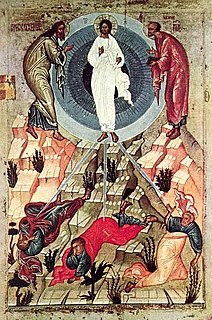 W
WEckhart von Hochheim, commonly known as Meister Eckhart or Eckehart, was a German theologian, philosopher and mystic, born near Gotha in the Landgraviate of Thuringia in the Holy Roman Empire.
 W
WEnlightenment is the "full comprehension of a situation". The term is commonly used to denote the Age of Enlightenment, but is also used in Western cultures in a religious context. It translates several Buddhist terms and concepts, most notably bodhi, kensho and satori. Related terms from Asian religions are moksha (liberation) in Hinduism, Kevala Jnana in Jainism, and ushta in Zoroastrianism.
 W
WHesychasm is a mystical tradition of contemplative prayer in the Eastern Orthodox Church. Based on Jesus's injunction in the Gospel of Matthew that "whenever you pray, go into your room and shut the door and pray to your Father who is in secret; and your Father who sees in secret will reward you", hesychasm in tradition has been the process of retiring inward by ceasing to register the senses, in order to achieve an experiential knowledge of God.
 W
WI Am That is a compilation of talks on Shiva Advaita (Nondualism) philosophy by Sri Nisargadatta Maharaj, a Hindu spiritual teacher who lived in Mumbai. The English translation of the book from the original Marathi recordings was done by Maurice Frydman, edited by Sudhakar S. Dixit and first published in 1973 by Chetana Publications. The book was revised and reedited in July 1981. These publications led to the spread of Nisargadatta's teachings to the West, especially North America and Europe. Excerpts of the book were published in Yoga Journal in September 1981, the month Nisargadatta died at age 84.
 W
WKashmir Shaivism, or Trika Shaivism, is nondualist tradition of Shaiva-Shakta Tantra which originated sometime after 850 CE. Though this tradition was very influential in Kashmir and is thus often called Kashmir Shaivism, it was actually a pan-Indian movement termed "Trika" by its great exegete, Abhinavagupta, which also flourished in Orissa and Maharashtra. Defining features of the Trika tradition are its idealistic and monistic Pratyabhijna ("Recognition") philosophical system, propounded by Utpaladeva and Abhinavagupta, and the centrality of the three goddesses Parā, Parāparā, and Aparā.
 W
WIn Christian theology, kenosis is the 'self-emptying' of Jesus' own will and becoming entirely receptive to God's divine will.
 W
WWithin the magical system of Austin Osman Spare, Kia is a mystical concept – a sort of universal consciousness or unity, similar to the Tao. The concept has been adopted by numerous other occultists, such as Kenneth Grant, and has been particularly influential on the chaos magic movement.
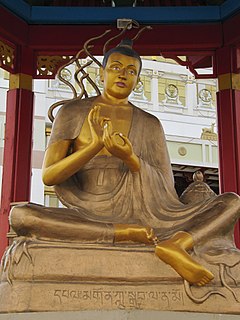 W
WMadhyamaka also known as Śūnyavāda and Niḥsvabhāvavāda refers to a tradition of Buddhist philosophy and practice founded by the Indian philosopher Nāgārjuna. The foundational text of the Mādhyamaka tradition is Nāgārjuna's Mūlamadhyamakakārikā. More broadly, Madhyamaka also refers to the ultimate nature of phenomena and the realization of this in meditative equipoise.
 W
WMahāmudrā literally means "great seal" or "great imprint" and refers to the fact that "all phenomena inevitably are stamped by the fact of wisdom and emptiness inseparable".
 W
WNisargadatta Maharaj, born Maruti Shivrampant Kambli, was a Hindu guru of nondualism, belonging to the Inchagiri Sampradaya, a lineage of teachers from the Navnath Sampradaya and Lingayat Shaivism.
 W
WRamana Maharshi was an Indian Hindu sage and jivanmukta. He was born Venkataraman Iyer, but is mostly known by the name Bhagavan Sri Ramana Maharshi.
 W
WMonism attributes oneness or singleness to a concept e.g., existence. Various kinds of monism can be distinguished:Priority monism states that all existing things go back to a source that is distinct from them; e.g., in Neoplatonism everything is derived from The One. In this view only one thing is ontologically basic or prior to everything else. Existence monism posits that, strictly speaking, there exists only a single thing, the universe, which can only be artificially and arbitrarily divided into many things. Substance monism asserts that a variety of existing things can be explained in terms of a single reality or substance. Substance monism posits that only one kind of stuff exists, although many things may be made up of this stuff, e.g., matter or mind. Dual-aspect monism is the view that the mental and the physical are two aspects of, or perspectives on, the same substance.
 W
WMysticism is popularly known as becoming one with God or the Absolute, but may refer to any kind of ecstasy or altered state of consciousness which is given a religious or spiritual meaning. It may also refer to the attainment of insight in ultimate or hidden truths, and to human transformation supported by various practices and experiences.
 W
WNeo-Advaita, also called the Satsang-movement and Nondualism, is a New Religious Movement, emphasizing the direct recognition of the non-existence of the "I" or "ego," without the need of preparatory practice. Its teachings are derived from, but not authorised by, the teachings of the 20th century sage Ramana Maharshi, as interpreted and popularized by H. W. L. Poonja and several of his western students.
 W
WNeo-Vedanta, also called Hindu modernism, neo-Hinduism, Global Hinduism and Hindu Universalism, are terms to characterize interpretations of Hinduism that developed in the 19th century. The term "Neo-Vedanta" was coined by German Indologist Paul Hacker, in a pejorative way, to distinguish modern developments from "traditional" Advaita Vedanta.
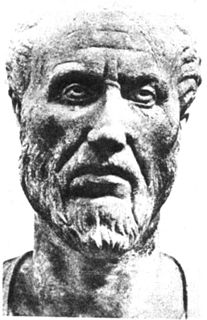 W
WNeoplatonism is a strand of Platonic philosophy that emerged in the second century AD against the background of Hellenistic philosophy and religion. The term does not encapsulate a set of ideas as much as it encapsulates a chain of thinkers which began with Ammonius Saccas and his student Plotinus and which stretches to the 5th century AD. Even though neoplatonism primarily circumscribes the thinkers who are now labeled Neoplatonists and not their ideas, there are some ideas that are common to neoplatonic systems; for example, the monistic idea that all of reality can be derived from a single principle, "the One".
 W
WNew Age is applied to a range of spiritual or religious beliefs and practices which rapidly grew in the Western world during the 1970s. Precise scholarly definitions of the New Age differ in their emphasis, largely as a result of its highly eclectic structure. Although analytically often considered to be religious, those involved in it typically prefer the designation of spiritual or Mind, Body, Spirit and rarely use the term New Age themselves. Many scholars of the subject refer to it as the New Age movement, although others contest this term and suggest that it is better seen as a milieu or zeitgeist.
 W
WOntopoetics is a philosophical concept that involves the communicative engagement of self with the world and the world with the self. It is also described as a "poetic order" that unfolds alongside the "causal order" in the process of the communicative engagement with reality and participating in it. It includes the perception of cues or signals, or the expression of actors, as well as "the construction of impressions on re-actors by the deliberate choice of attractive signifiers that communicate factual or illusory realities".
In philosophy of mind, panpsychism is the view that mind or a mindlike aspect is a fundamental and ubiquitous feature of reality. It is also described as a theory that "the mind is a fundamental feature of the world which exists throughout the universe." It is one of the oldest philosophical theories, and has been ascribed to philosophers including Thales, Plato, Spinoza, Leibniz, William James, Alfred North Whitehead, Bertrand Russell, and Galen Strawson. In the 19th century, panpsychism was the default philosophy of mind in Western thought, but it saw a decline in the mid-20th century with the rise of logical positivism. Recent interest in the hard problem of consciousness has revived interest in panpsychism.
 W
WPhilosophy of mind is a branch of philosophy that studies the ontology and nature of the mind and its relationship with the body. The mind–body problem is a paradigmatic issue in philosophy of mind, although a number of other issues are addressed, such as the hard problem of consciousness and the nature of particular mental states. Aspects of the mind that are studied include mental events, mental functions, mental properties, consciousness, the ontology of the mind, the nature of thought, and the relationship of the mind to the body.
 W
WPrajñā (Sanskrit) or paññā (Pāli), is a Buddhist term often translated as "wisdom", "intelligence", or "understanding". It is described in Buddhist commentaries as the understanding of the true nature of phenomena. In the context of Buddhist meditation, it is the ability to understand the three characteristics of all things: anicca (impermanence), dukkha, and anattā (non-self). Mahāyāna texts describe it as the understanding of śūnyatā. It is part of the Threefold Training in Buddhism, and is one of the ten pāramīs of Theravada Buddhism and one of the six Mahāyāna pāramitās.
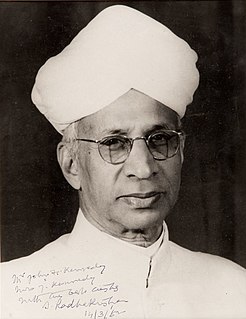 W
WSarvepalli Radhakrishnan pronunciation (help·info) was an Indian philosopher, academic, and statesman who served as the first Vice President of India (1952–1962) and the second President of India (1962–1967).
 W
WIn Dzogchen teaching, rigpa is the knowledge of the ground. The opposite of rigpa is marigpa.
 W
WSahaja means spontaneous enlightenment in Indian and Tibetan Buddhist spirituality. Sahaja practices first arose in Bengal during the 8th century among Buddhist yogis called Sahajiya siddhas.
 W
WSelf-enquiry, also spelled self-inquiry, is the constant attention to the inner awareness of "I" or "I am" recommended by Ramana Maharshi as the most efficient and direct way of discovering the unreality of the "I"-thought.
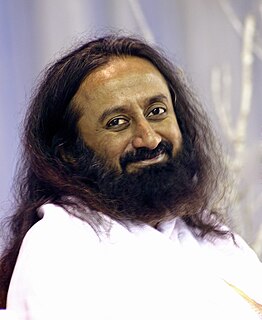 W
WRavi Shankar is an Indian spiritual leader. He is frequently referred to as "Sri Sri" (honorific), Guru ji, or Gurudev. He founded the Art of Living Foundation in 1981, a volunteer-based NGO providing social support to the people. In 1997, he established a Geneva-based charity, the International Association for Human Values, an NGO that engages in relief work and rural development.
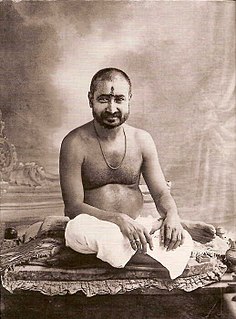 W
WSri Siddharameshwar Maharaj (1888–1936) was a guru in the Inchagiri Sampradaya founded by his guru Shri Bhausaheb Maharaj, a branch of the Navnath Sampradaya, the 'Nine Masters' tradition in India. He was the Guru of Nath teachers Sri Nisargadatta Maharaj, Sri Ranjit Maharaj, Sri Kadsiddheshwar Maharaj, Sri Ganpatrao Maharaj, Kannur and Sri Vilasananad Maharaj, Keni.
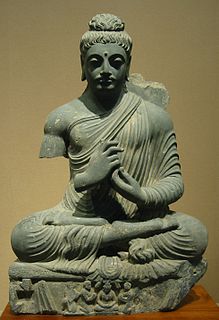 W
WŚūnyatā – pronounced in English as (shoon-ya-ta), translated most often as emptiness, vacuity, and sometimes voidness – is a Buddhist concept which has multiple meanings depending on its doctrinal context.
 W
WTantra denotes the esoteric traditions of Hinduism and Buddhism that developed in India from the middle of the 1st millennium CE onwards. The term tantra, in the Indian traditions, also means any systematic broadly applicable "text, theory, system, method, instrument, technique or practice". A key feature of these traditions is the use of mantras, and thus they are commonly referred to as Mantramārga in Hinduism or Mantrayāna and Guhyamantra in Buddhism.
 W
WEckhart Tolle is a spiritual teacher and best-selling author. He is a German-born resident of Canada best known as the author of The Power of Now and A New Earth: Awakening to Your Life's Purpose. In 2008, The New York Times called Tolle, "the most popular spiritual author in the United States". In 2011, he was listed by Watkins Review as the most spiritually influential person in the world. Tolle does not identify with any specific religion, but he has been influenced by a wide range of spiritual works.
 W
WVishishtadvaita is one of the most popular schools of the Vedanta school of Hindu philosophy. Vedanta literally means the end of the Vedas. VishishtAdvaita is a non-dualistic school of Vedanta philosophy. It is non-dualism of the qualified whole, in which Brahman alone exists, but is characterized by multiplicity. It can be described as qualified monism or qualified non-dualism or attributive monism. It is a school of Vedanta philosophy which believes in all diversity subsuming to an underlying unity.
 W
WYoga is a group of physical, mental, and spiritual practices or disciplines which originated in ancient India. Yoga is one of the six Āstika (orthodox) schools of Hindu philosophical traditions.
 W
WYogachara is an influential tradition of Buddhist philosophy and psychology emphasizing the study of cognition, perception, and consciousness through the interior lens of meditative and yogic practices. It is also variously termed Vijñānavāda, Vijñaptivāda or Vijñaptimātratā-vāda, which is also the name given to its major epistemic theory. There are several interpretations of this main theory, some scholars see it as a kind of Idealism while others argue that it is closer to a kind of phenomenology or representationalism.
 W
WZen is a school of Mahayana Buddhism that originated in China during the Tang dynasty, there known as the Chan School, and later developed into various schools. The Chan School was strongly influenced by Taoist philosophy, especially Neo-Daoist thought, and developed as a distinct school of Chinese Buddhism. From China, Chán spread south to Vietnam and became Vietnamese Thiền, northeast to Korea to become Seon Buddhism, and east to Japan, becoming Japanese Zen.